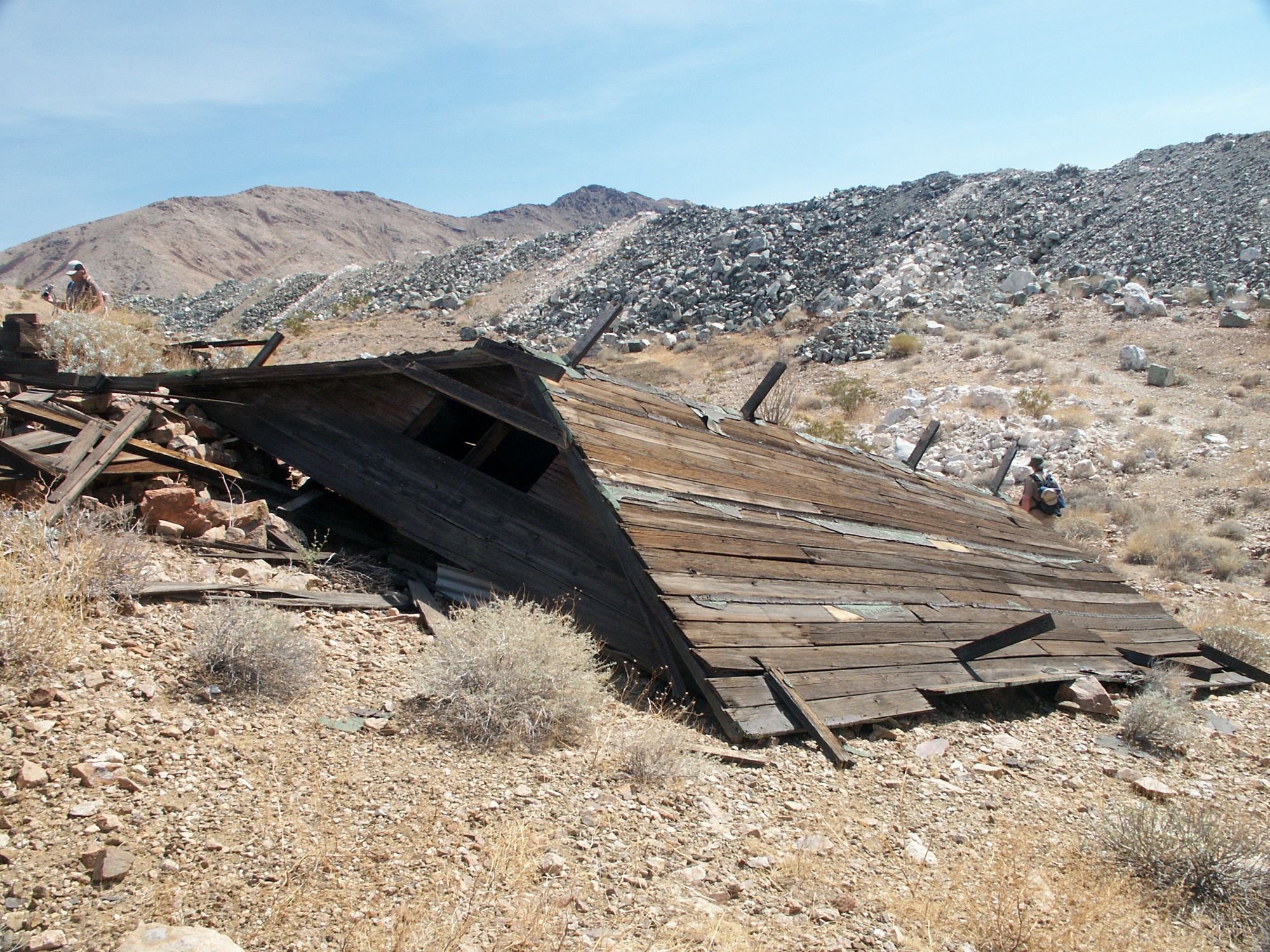Outside Joshua Tree National Park and deep within the stark Eagle Mountains, the crumbling Black Eagle Mine, surrounded by its massive neighbor, the Eagle Mountain Mine, is slowly fading into the desert. Its ruins are barely recognizable as the bustling operation they once were.
In 1898, a prospector named Rust first staked his claim. However, it wasn't until Edward Harmon relocated the mine in 1921 that things really got rolling. Over the next two decades, the Black Eagle would see periods of furious activity punctuated by stretches of quiet abandonment.
In its heyday, miners chased veins of gold, silver, lead, and copper through the mountain. They sank a shaft 650 feet into the earth, carving out levels every hundred feet or so. Up on the surface, they erected a small two-stamp mill to crush and process the ore. By 1929, this had been replaced with a 20-ton dry concentration plant featuring a Blake crusher, bucket elevators, a trommel screen, rolls, and two Cottrell tables. They even ran an ambitious 18-mile water pipeline from Cottonwood Springs all the way up to the mine.
The mine's fortunes ebbed and flowed with metal prices. Its most productive period came in the late 1930s when the Imperial Smelting & Refining Co. took over. They expanded operations, building a 150-ton concentration plant and employing up to 50 men. Things were going great; the company pulled out over $250,000 worth of ore in just three years.
But by 1940, the dream had faded. The company had sunk $750,000 into the mine to get that $250,000 out. They shuttered the operation, leaving behind only a watchman to guard the silent machinery.
Remarkably, when the massive Eagle Mountain Mine began operations nearby in 1948, it left the Black Eagle untouched. Today, the ruins stand like a historical island, surrounded by the bulldozed landscape and vast waste piles of its larger neighbor. This quirk of fate has preserved a unique window into the area's early mining history, making the Black Eagle a fascinating site to explore.

Directions
- Road: 12.1 miles, High Clearance 4WD.
- Hike: Moderate 5.9 miles out and back, 930 ft gain round trip. 3 hours.
Road
To get to the start of this trek, drive to the junction of Pinto Basin Road and Black Eagle Mine Road. This is in the southern part of the park, 6.8 miles north of the Cottonwood Entrance Station and 13 miles south of the Cholla Cactus Garden.
From the junction, take the right fork, Black Eagle Mine Road, and head out into the flat Pinto Basin. After five miles, the road skirts around some hills to the south, crosses some washes, and enters more of a badland terrain. At 9.6 miles, an unmarked road heads north (to the Lucky Turkey Arrastra), but you will want to continue straight. You are entering a mix of BLM and unmarked private lands here.
At 11.2 miles from the junction, a side road drops down to the former site of the EMD Cabin. It makes for a decent campsite these days. The road continues and enters a canyon. Park at the trailhead, where a wash crosses the road. You can drive further up the road, but a nasty surprise in the form of a giant boulder blocks the road ahead, leaving no spot to turn around.
Hike
You'll need my map and a GPS to get out to the Black Eagle Mine ruins. Follow the road from the trailhead up to the crest of the hill; you will see the ruined mill of the Iron Chief Mine below. It was first worked for gold by at least 1897, but the iron made the ore difficult to work. It's an interesting site on its own and worth a few minutes to explore.
You can drop down through the mill ruin or walk the loop down, but once below, continue on the road through the canyon to the north. The old road drops a couple hundred feet and enters a basin. Head across and climb up a low hill. The massive waste piles of the abandoned open pit Eagle Mountain Mine really come into view here.
Eagle Mountain was established by Henry J. Kaiser in 1948 and quickly became Southern California's largest iron mine. It supplied Kaiser's steel mill in Fontana for over thirty years, producing an estimated 3,500 tons of iron ore per day at its peak. There have been ongoing discussions of adding this area to the park for years.
After the hill, the road passes through an old gate, and you'll have to cut across a bulldozed road, but directly ahead are the ruins of the Black Eagle Mine.



